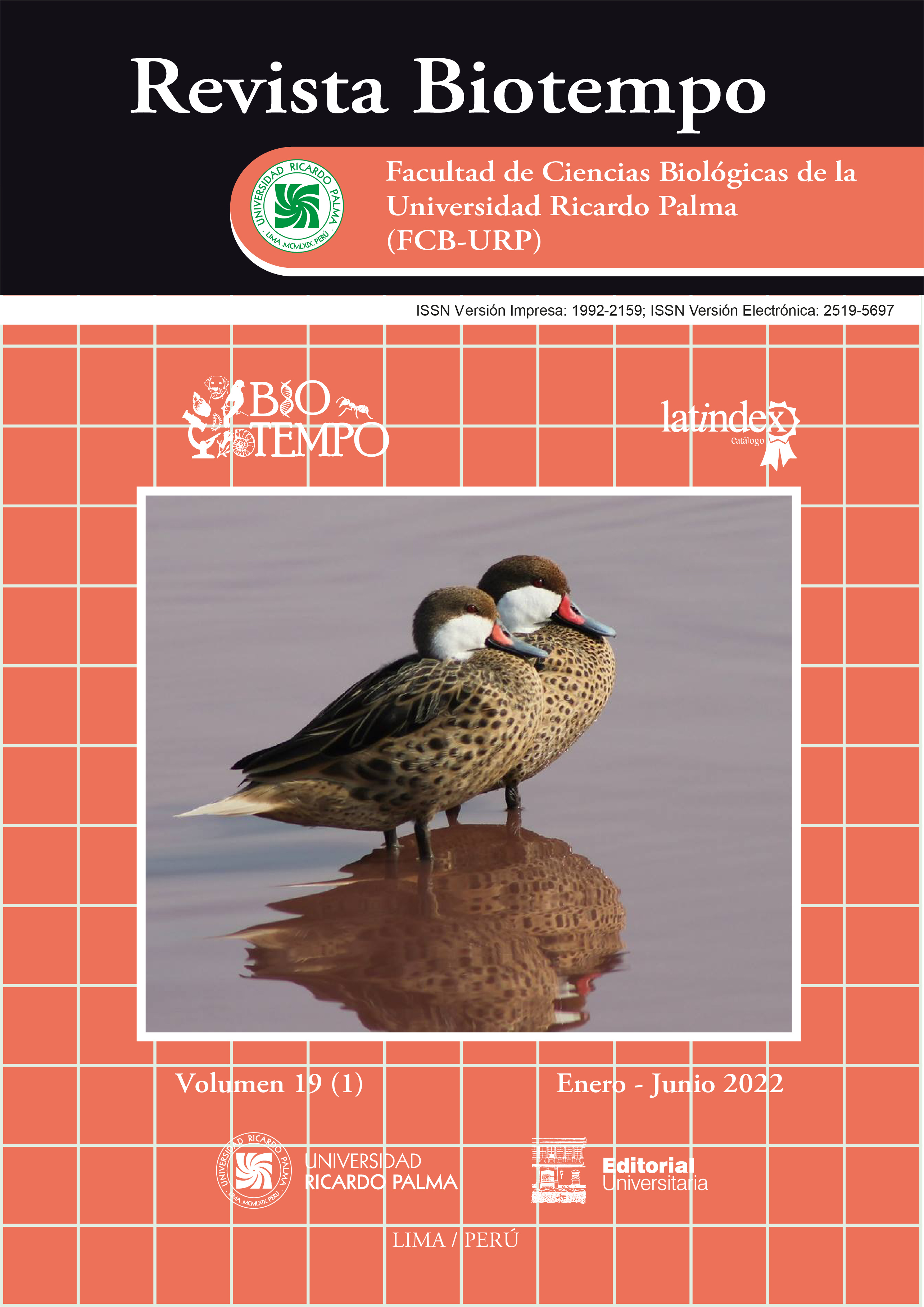CHARACTERIZATION OF ACCIDENTS DUE TO CANINES BITE (CANIS LUPUS FAMILIARIS LINNAEUS, 1758) REGISTERED IN THE ZOONOSIS AND VETERINARY CENTER OF LURIGANCHO-CHOSICA, PERU: 2016 TO 2019
DOI:
https://doi.org/10.31381/biotempo.v19i1.4705Keywords:
Agraviado, Agresor, Can, Mordedura, SaludAbstract
An investigation was carried out whose purpose was to determine the characterization of dog bite accidents (Canis lupus familiaris Linnaeus, 1758). 624 cases were collected through the datasheets of the MINSA (Ministry of Health) of Peru from 2016 to 2019, from the zoonosis and veterinary center of Lurigancho-Chosica, Peru. Physical fi les established by MINSA for data collection for dog bites were analyzed. Once the data was obtained, the information from the surveys was processed in the Microsoft Offi ce Professional 2019 program (Microsoft Excel) and IBM SPSS Statistics. Th e results of the analysis show an annual incidence rate of 259.12 people bitten per 100,000 inhabitants, in addition to the fact that the year with the highest frequency of bites was 2016 (28.2%); Likewise, it was shown that the months with the highest frequency of dog bite cases were in January (12.7%), February (11.2%), August (11.1%) and July (9.3%). The most aff ected age group was 30-59 years (34.9), the most aff ected age group were adults (30-59), also the vaccination status of the dogs is worrying because more than 50% are not vaccinated against rabies; Finally, with regard to the breed of dogs most predisposed to cause dog bites, it was the mestizo. It is concluded that the frequency of dog bites is decreasing each year and that there is a greater presentation of dog bites in the months of January, February, August, and July, being the male gender the most aff ected.










